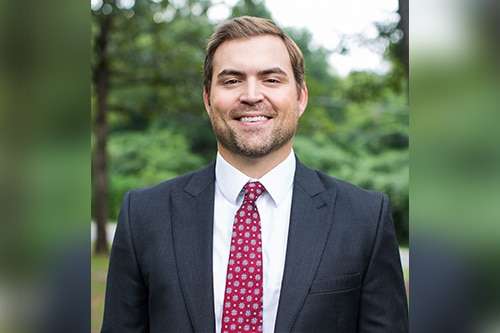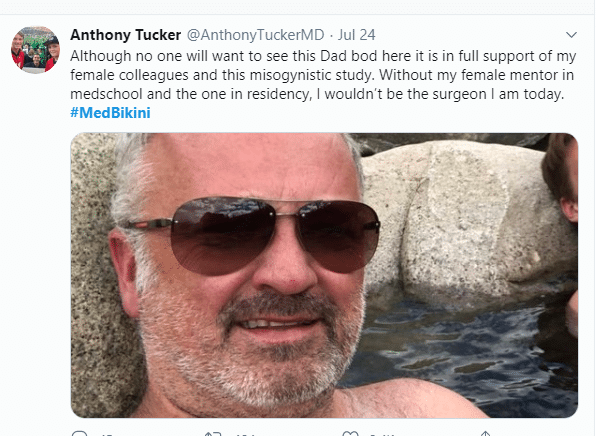Sex with Patients, Opioids, and Vaccine Waivers. Riling Up the Board.
Medical Justice provides free consultations to doctors facing medico-legal obstacles. We have solutions for doctor-patient conflicts, unwarranted demands for refunds, online defamation (patient review mischief), meritless litigation, and a gazillion other issues. We also provide counsel specific to COVID-19. If you are navigating a medico-legal obstacle, visit our booking page to schedule a consultation – or use the tool available below.
"Can Medical Justice solve my problem?" Click here to review recent consultations...
We’ve been protecting doctors from medico-legal threats since 2001. We’ve seen it all. Here’s a sample of typical recent consultation discussions…
- Former employee stole patient list. Now a competitor…
- Patient suing doctor in small claims court…
- Just received board complaint…
- Allegations of sexual harassment by employee…
- Patient filed police complaint doctor inappropriately touched her…
- DEA showed up to my office…
- Patient “extorting” me. “Pay me or I’ll slam you online.”
- My carrier wants me to settle. My case is fully defensible…
- My patient is demanding an unwarranted refund…
- How do I safely terminate doctor-patient relationship?
- How to avoid reporting to Data Bank…
- I want my day in court. But don’t want to risk my nest egg…
- Hospital wants to fire me…
- Sham peer review inappropriately limiting privileges…
- Can I safely use stem cells in my practice?
- Patient’s results are not what was expected…
- Just received request for medical records from an attorney…
- Just received notice of intent to sue…
- Just received summons for meritless case…
- Safely responding to negative online reviews…
We challenge you to supply us with a medico-legal obstacle we haven’t seen before. Know you are in good hands. Schedule your consultation below – or click here to visit our booking page.
A “love letter” from the Board of Medicine can kick-start a very stressful experience. Board complaints have evolved over the years. The primary purpose of the Board is to protect the public from unsafe doctors. That role has evolved to address “undesirable” behaviors, which may or may not impact patient outcomes. Board priorities often reflect what’s making the news.
Remember when doctors were beaten up for ignoring the fifth vital sign – pain. According to the Boards then, doctors undertreated pain. Physicians are supposed to alleviate suffering, and that includes pain. New pain modalities were prescribed. Post-op treatments with opioids were lengthened and the spigots overflowed with refills. No more frowny faces on the “How do you feel?” cartoon. On a scale from 1-10, with “10” being the most painful experience you ever had, pain medications were given for “3” and above.
Today, you’d need an “11” to get substantive pain medication. Opioids are now prescribed like Scrooge on Christmas Eve. Woe to the doctor who prescribes opioids for any length of time without supporting documentation. If that opioid recipient patient then goes to the street, feeds a fentanyl habit and dies, well, you’ll find your self in the crosshairs of the Medical Board and criminal justice system.
Yes, a lot has changed.
If you prescribe opiates, document like there’s no tomorrow. Check state-sponsored websites to see if that patient is getting prescriptions from more than one source. Make sure the type and frequency of what you prescribe will pass scrutiny amongst your peers. And if you are getting in over your head, refer the patient to a Board-certified pain management doctor and / or addiction specialist. Heads are rolling because of the opioid crisis. Don’t let it be your head.
Onward to the Me-Too movement. Behavior that was shrugged off decades ago is no longer tolerated. Don Draper of Mad Men would never make it sanction-free through his internship. Sex with patients or sex with colleagues is proscribed unless assorted “rules” are followed. If a patient is attracted to you and you want to explore that relationship, terminate the formal doctor-patient relationship and wait some time. How long? Depends upon what the reason for and type of treatment. The more serious the treatment and the more “vulnerable” the patient, the longer that waiting period should be. When I say “vulnerable,” I’m not being paternalistic. Adults are free to make autonomous decisions. But the Board will impose its judgment as to whether that patient could “freely consent.” If you’ve been providing chemotherapy over months to a stage IV cancer patient, don’t start dating one week after the last IV infusion. Also, with some patients, for example, select psychiatric patients, the waiting period should extend to infinity. These are not hard and fast rules, just judgment calls. Each state’s Board of Medicine will have different opinions.
In 2020, the proscription against sex with a patient applies equally to men and women. The offense will deliver an equal opportunity punishment.
Onward to sex with a colleague. If the relationship sours and a complaint is filed, and the colleague is perceived as being below you in the hierarchal pecking order, the Board will conclude you took advantage of your power. This can also morph into a civil claim. I’ve even seen this turn into a criminal charge of sexual abuse or rape. Play with fire and you may get burned. A substantial minority of people find such secret dalliances sufficiently exciting to take a chance. Lots of dopamine flows. Unless the relationship has staying power, its unwinding could include a visit from the Board. Tread cautiously.
Finally, in the news. School districts with progressively lower rates of vaccination amongst pupils. And measles at Disneyland. Only 15 states now allow a “personal belief exemption.”
All 50 states have legislation requiring specified vaccines for students. Although exemptions vary from state to state, all school immunization laws grant exemptions to children for medical reasons. There are 45 states and Washington D.C. that grant religious exemptions for people who have religious objections to immunizations. Currently, 15 states allow philosophical exemptions for those who object to immunizations because of personal, moral or other beliefs.
When a state legislature tightens up eligibility for vaccine exemptions, the only reliable way for a family to obtain Junior’s exemption is a medical waiver. A doctor must provide a reason and sign off. Cannot just say because it is “my medical judgment.” In select states, Boards of Medicine are scrutinizing whether select medical vaccine waivers pass its sniff test. What might work? Prior documentation of a severe reaction to a vaccine or its ingredients. Live attenuated virus in a patient with an immune disorder. Or other contraindications listed on the pharmaceutical marketing label. My point is the landscape has changed. The documentation required to support specific conclusions needs attention on the front end.
So, there you have it. Boards now tackle evolving priorities. This list will not stay static. Will other items replace these priorities? I fear other items will add to these priorities.
Ever had an unfair challenge with the Board? Feel free to comment below.
Medical Justice provides free consultations to doctors facing medico-legal obstacles. We have solutions for doctor-patient conflicts, unwarranted demands for refunds, online defamation (patient review mischief), meritless litigation, and a gazillion other issues. We also provide counsel specific to COVID-19. If you are navigating a medico-legal obstacle, visit our booking page to schedule your consultation – or use the tool available below.
"Can Medical Justice solve my problem?" Click here to review recent consultations...
We’ve been protecting doctors from medico-legal threats since 2001. We’ve seen it all. Here’s a sample of typical recent consultation discussions…
- Former employee stole patient list. Now a competitor…
- Patient suing doctor in small claims court…
- Just received board complaint…
- Allegations of sexual harassment by employee…
- Patient filed police complaint doctor inappropriately touched her…
- DEA showed up to my office…
- Patient “extorting” me. “Pay me or I’ll slam you online.”
- My carrier wants me to settle. My case is fully defensible…
- My patient is demanding an unwarranted refund…
- How do I safely terminate doctor-patient relationship?
- How to avoid reporting to Data Bank…
- I want my day in court. But don’t want to risk my nest egg…
- Hospital wants to fire me…
- Sham peer review inappropriately limiting privileges…
- Can I safely use stem cells in my practice?
- Patient’s results are not what was expected…
- Just received request for medical records from an attorney…
- Just received notice of intent to sue…
- Just received summons for meritless case…
- Safely responding to negative online reviews…
We challenge you to supply us with a medico-legal obstacle we haven’t seen before. Know you are in good hands. Schedule your consultation below – or click here to visit our booking page.
Take Advantage of Our Review Monitoring Service
We provide qualified applicants with free review monitoring for 6 week. Reports delivered bi-weekly.
Request a Consultation with Our Founder
Medical Justice Founder and CEO, Jeff Segal, MD, JD, provides consultations to doctors in need of guidance.
Meet the Experts Driving Medical Justice
Our Executive Team walks with our member doctors until their medico-legal obstacles are resolved.
Jeffrey Segal, MD, JD
Chief Executive Officer and Founder
Dr. Jeffrey Segal, Chief Executive Officer and Founder of Medical Justice, is a board-certified neurosurgeon. Dr. Segal is a Fellow of the American College of Surgeons; the American College of Legal Medicine; and the American Association of Neurological Surgeons. He is also a member of the North American Spine Society. In the process of conceiving, funding, developing, and growing Medical Justice, Dr. Segal has established himself as one of the country’s leading authorities on medical malpractice issues, counterclaims, and internet-based assaults on reputation.
Dr. Segal was a practicing neurosurgeon for approximately ten years, during which time he also played an active role as a participant on various state-sanctioned medical review panels designed to decrease the incidence of meritless medical malpractice cases.
Dr. Segal holds a M.D. from Baylor College of Medicine, where he also completed a neurosurgical residency. Dr. Segal served as a Spinal Surgery Fellow at The University of South Florida Medical School. He is a member of Phi Beta Kappa as well as the AOA Medical Honor Society. Dr. Segal received his B.A. from the University of Texas and graduated with a J.D. from Concord Law School with highest honors.
In 2000, he co-founded and served as CEO of DarPharma, Inc, a biotechnology company in Chapel Hill, NC, focused on the discovery and development of first-of-class pharmaceuticals for neuropsychiatric disorders.
Dr. Segal is also a partner at Byrd Adatto, a national business and health care law firm. With over 50 combined years of experience in serving doctors, dentists, and other providers, Byrd Adatto has a national pedigree to address most legal issues that arise in the business and practice of medicine.






